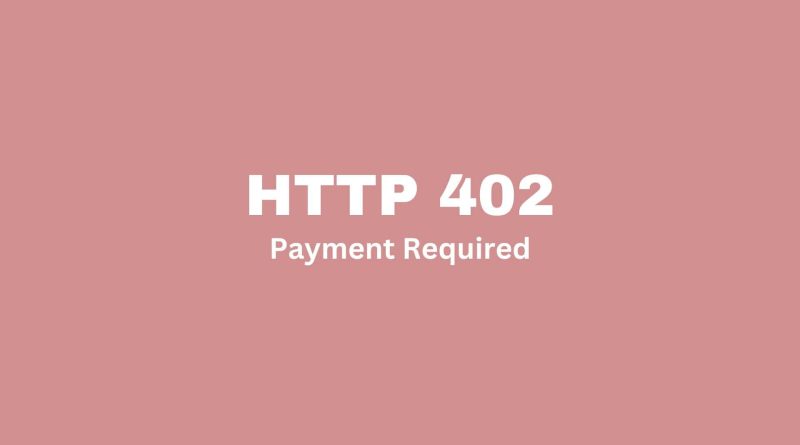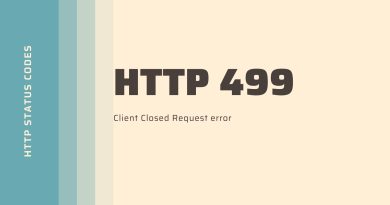HTTP 402: Ultimate Guide To Fix Payment Required Error
Are you noticing strange error codes when accessing certain websites? One of the most common and confusing is the HTTP 402 status code. It’s an issue that many people face, yet few know how to fix it. In this article, we’ll explain what the HTTP 402 unorthodox http status code error means and how to troubleshoot it so that you can get back online quickly.
What Is 402 Http Status Code?
HTTP 402 is a status code that is not yet officially defined in the Hypertext Transfer Protocol (HTTP). It is a rare code classified as experimental and indicates that payment is required in order to access the requested resource. It’s a relatively uncommon response from an HTTP server, but can be encountered when attempting to view certain web pages or use certain services.
This type of error code will usually prevent you from accessing the page until payment is received, so understanding what it means and how to fix it is important for any user trying to access content on the web.
In most cases, a 402 status code occurs because authorization has been denied due to insufficient funds or credit available on the account being used for payment. The issue may also arise if new billing information needs to be supplied before further requests can be made.
It’s possible that developers have added functionality within their websites that require users to make payments before they can proceed – this could mean purchasing products or services, subscribing to newsletters, or even signing up as members with additional privileges granted upon successful completion of the transaction.
In these scenarios, failure to provide valid payment details (or sufficient funds) would result in a 402 being triggered by the server.
Cause Of 402 Http Status Code Error
A 402 HTTP status code is an error that occurs when the request HTTP method used does not have enough digital cash to access a requested resource. This can be caused by several different factors, including insufficient payment or lack of authentication credentials. Another possible cause could be incorrect configuration settings on either the server side or the client side.
In some cases, it’s also possible for the user to receive this response code if they are attempting to access content that has been blocked due to security reasons. Typically, browsers will display a message indicating that there was an issue with processing payment and preventing them from viewing the content.
The exact source of the problem must be identified in order to resolve it effectively. In many cases, resolving this type of error may require further investigation into whether it is a server-side or client-side issue before any action can be taken.
Server Side Or Client Side Issue?
When an HTTP 402 status code is received, it indicates that the request has failed due to an error. This type of client error response can occur when there is something wrong with the requested content or if incorrect parameters were used in making the request. The exact cause of this issue can sometimes be hard to pinpoint as it could either be on the server side or the client side.
On one hand, if it’s a server-side issue then chances are that the webmaster needs to adjust some settings and configurations before the request can go through successfully.
On the other hand, if it’s a client-side problem then there might not be any adjustments necessary – instead, they need to check their browser and connection settings for anything out of the ordinary which may have caused the failure.
How To Fix 402 Http Status Code Error
The 402 HTTP status code is an error that occurs when the payment systems are unable to process a request. It can be caused by various issues, but it generally means that there has been an error somewhere in the transaction, and therefore the server reserves this response for future use.
This particular code is not widely used due to its reserved nature and as such, resolving it may require further investigation into why it occurred in the first place.
One way to troubleshoot a 402 HTTP status code error is by looking at what happened before the issue was encountered. For example, if you’ve recently made changes to your payment system configuration or added new services and suddenly started receiving errors then those could have triggered the problem.
Additionally, checking for any updates on third-party integrations can also help since some of them might affect how requests are being processed by servers.
Finally, reviewing logs from both the client side and server side can provide more information about which part of the application caused the error and potentially offer insights into how it can be fixed. With all these points taken into consideration, it should become easier to pinpoint where exactly did something go wrong and take the necessary steps to resolve it.
How To Prevent 402 Not Acceptable Error?
The 402 HTTP status code is an unorthodox one since it is not part of the standard response codes. When this error occurs, different entities trying to access a target resource are denied due to various reasons and receive a ‘402 Not Acceptable’ message in return.
This can be caused by incorrect URL parameters, such as using the wrong data type or unpermitted characters for certain requests.
To prevent this confusing error from occurring, we must ensure that all requests use appropriate parameters when attempting to access a resource. This means verifying the correct data types and only using permitted characters when necessary.
Additionally, ensuring that any credentials used for authentication are valid and up-to-date will also help reduce the chance of getting this error message.
Other Similar Http Status Codes To 402
When it comes to similar HTTP status codes, there are several other errors besides the 402 that may present themselves on websites. These include:
1) 403 Forbidden – This indicates that the server refuses to fulfill the request;
2) 404 Not Found– This signifies that the requested page was not found;
3) 405 Method Not Allowed – This refers to using an unsupported method for communication with a web server;
4) 408 Request Timeout – This implies that a client did not generate a response within its allotted time frame.
These four HTTP status codes are some of the more common ones seen in website development but they are certainly not all-encompassing. Although these errors can create some frustration for users, understanding what each code signifies helps us make sense of any issues we encounter while navigating online content.
All HTTP status codes by categories
Informational responses
(100 – 199)



